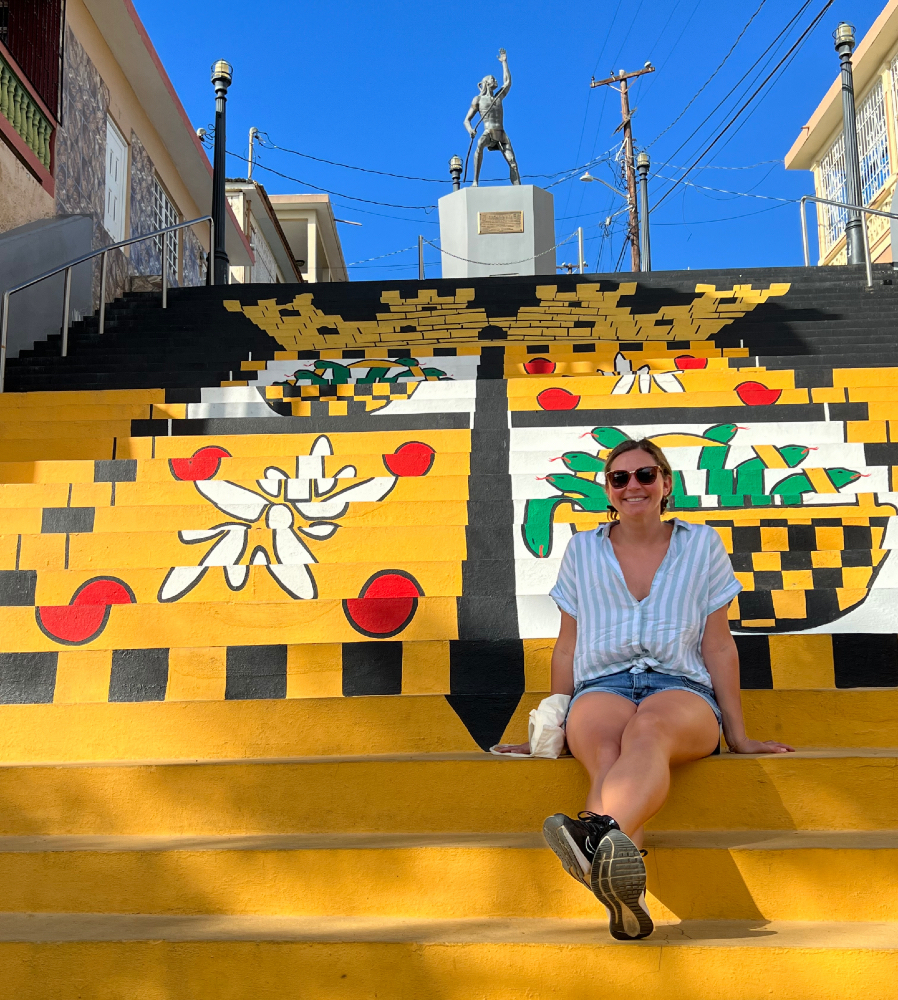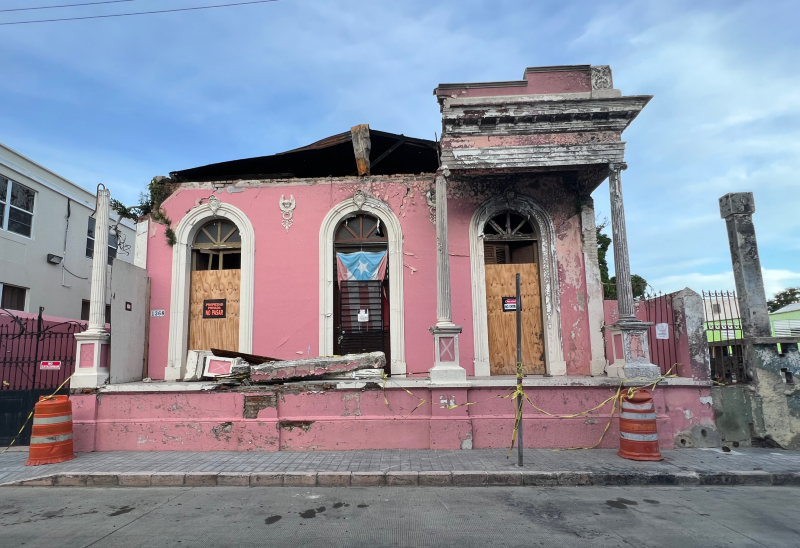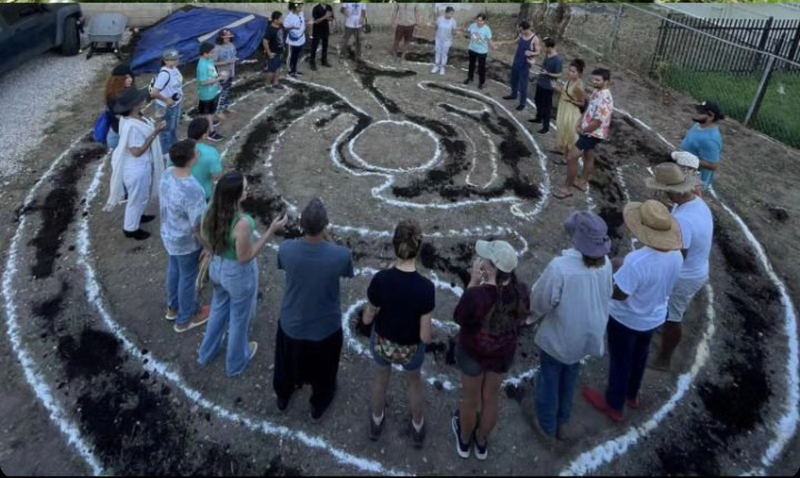Ph.D. student Caroline Watson makes important contributions to NPS research on archaeology and climate disaster in the Caribbean

This summer, Ph.D. student Caroline Watson worked as the Climate Change and Cultural Resources intern for the Climate, Science, and Disaster Response program of the National Park Service, contributing to important work aimed at mitigating climate impacts on archaeological sites. This position focuses on monitoring the impacts of climate on archaeological resources in the Caribbean, with the goal of developing strategies and solutions aimed at mitigating these. Caroline’s role in this National Center for Preservation Education internship overlapped significantly with her own doctoral project on the impacts of hurricanes and other environmental disasters on the people and landscape of Puerto Rico. For this spotlight article, Caroline sat down with her friend and colleague Tomos Evans to discuss her work, how it connects with her Ph.D. project, and her broader intellectual journey as a researcher of climate and of the archaeology and cultural anthropology of the Caribbean.
Caroline’s fascination for Caribbean history and culture first developed as an undergraduate student at Wake Forest University, when she accompanied a professor on a research trip to Cuba in 2016. “As an undergraduate I was introduced to the Cuban art and visual cultural production scene by one of my closest mentors – the Romance Language professor Linda Howe. She and her colleague Elvia Rosa Castro brought me to Cuba with them, which inspired me to study the art world there.” Caroline’s enthusiasm for the cultural heritage of the Caribbean, her friendships with a number of Caribbeanist scholars, and her fluency in Spanish, meant that she was well-positioned to soon begin conducting her own independent research. Through a connection at the Smithsonian Institution – Antonio Curet, a Puerto Rican archaeologist – Caroline visited Puerto Rico in the summer of 2022 to work on a museum collection at the Tibes Indigenous Ceremonial Centre, a Taíno archaeological site and museum. An important settlement of the indigenous Taíno people, the site consists of spectacular cultural features including ball courts, burials, petroglyphs, and evidence of extensive occupation in the pre-Columbian era.
It was while working on the collections here that Caroline came face-to-face with the impacts of climate and natural disaster on cultural heritage. “I was working at the museum re-cataloguing bags of artefacts. The plastic bags had deteriorated in the increasingly humid climate, and when the earthquakes struck in January 2020, shelves were destroyed and bags split leading to everything from crab shells, lithics, ceramic sherds, beautiful anthropomorphic figurines, to human bones spilling out over the floor.” The museum staff lacked the resources to continue to care for these objects in the way they wanted, and were not well equipped to deal with future environmental challenges threatening their incredible collection. Caroline therefore felt galvanized to take her research in a new direction: to focus on the archaeology of disaster in Puerto Rico, and the impacts of climate and other environmental stressors to archaeological resources.
Caroline’s work with NPS was a perfect fit with her newfound research interests, and offered her a valuable opportunity to contribute to efforts to monitor and mitigate the effects of climate change on the historic cultural heritage of the Caribbean. “My work with NPS is to research climate change impacts to archaeological resources as well as corresponding adaptation strategies. Within that, I had a lot of freedom to design how I wanted to research this broad topic.” As there is only one U.S. National Park in Puerto Rico, Caroline decided to undertake a wider investigation of these issues in Tropic/Sub-Tropic regions, including the Caribbean more broadly. She has conducted literature reviews, studies of climate policy, and interviews with a number of key stakeholders in Puerto Rico, the US Virgin Islands, Cuba, the Lesser Antilles, Hawaii, Guam, the Florida Keys, and more. “I have been thinking about how climate change is materializing at the shores of island society in the Caribbean, and impacts to archaeological sites is one way to look at this. I was really interested in what they call “adaptation strategies” – a fancy way of saying “we want to know about how to mitigate these impacts.” Impacts include sea level rise, extreme weather events, hurricanes, extreme changes in precipitation, and anthropogenic impacts like sand mining and real estate development. So, I’m exploring the strategies that people have used to mitigate these impacts to archaeological resources, and what more can be done.”
Importantly, this process involved interviews of archaeologists working at sites located on shorelines that are regularly affected by extreme weather, sea level rise, and erosion. This exposed Caroline to a range of perspectives regarding strategies of how to adapt to these challenges, or in more severe cases, how to salvage material from sites likely to be destroyed by manmade changes to the environment. For example, dune-building projects are aimed at restoring sand dunes impacted by hurricanes, which act as natural barriers that protect archaeological sites from the sea. These interviews have also delved into how archaeologists prepare for loss, especially in cases where sites won’t exist by the end of the decade. Caroline’s experiences on the ground in Puerto Rico and elsewhere in the Caribbean have revealed to her the importance of localized research, perspectives, and solutions, especially in the face of a National Park Service zoning policy that groups Puerto Rico and the US Virgin Islands with the US southeast (including states such as Kentucky and Tennessee). “These places don’t experience hurricanes with the same frequency and same intensity as the Caribbean: they should not be zoned together like this.” As such, her research looks to support such local approaches, as well as stimulate novel conversations pertaining to the interconnectedness of climate disasters (hurricanes, warming seas, the death of coral reefs etc.) and the co-complexities of how these things affect both everyday life on Caribbean islands and archaeological resources in these places.
While her internship has involved researching the destruction of archaeological sites due to climate, Caroline’s dissertation will also be exploring the ways in which climate disasters are memorialized, creating new places in landscape memory. Through ethnographic and archaeological research, she is seeking to understand the experiences of how people live with these events, how they become a part of everyday life and identity, and how they may even generate new archaeological sites and spaces. She is posing a number of questions to better explore these social phenomena: “What does it mean to be prepared? What does it mean to be vulnerable? How is resilience embodied and materialized? How do these social variables relating to climate disaster manifest in the physical landscape of Puerto Rico?” Just as a tropical storm may forever destroy an archaeological site on the shoreline, so too might it generate new ones – for instance, where people communally pile up layers of refuse and rubble as they deal with the trauma and tragedy of these events together. “Hurricanes don’t merely remove, they generate. They expose new archaeological sites and create new ones. For instance, the Tibes site that I mentioned earlier is said to have been exposed by Hurricane Eloise in 1975.”

Toward the end of the conversation, Caroline discussed some specific collaborations that are in the works for her dissertation research in Ponce, Puerto Rico. She has been engaging with community groups in the Ponce area, like La Casa de Arte y Cultura de la Playa de Ponce and Para La Naturaleza, to not just immerse herself in the Ponce community but to learn more about the local-level organization of resilience. One collaboration she expanded upon will be the excavation of an early 20th century home—La Casa Rosa Luisa—that bears the scars, like many residences, of earthquakes, hurricanes, fires, and delays in repair. Caroline is collaborating with the residence owner to focus on how they can use the materiality of ruination to reimagine the future of this home and promote community conversation surrounding the lingering trauma that accompanies climate and social disasters. They’re considering what it means to live in the aftermaths of disasters, of walking past such sites of ruination and being reminded of the suffering, loss, and trauma of these repeated events. At a time when anthropogenic climate change is a driving force behind many of these traumatic events, archaeology can be a tool for healing in this southern Puerto Rican community. “The communal exploration of ruins offers people opportunities to come back to these sites of past trauma and begin to think of them more positively; archaeology can be used as a medium to engage with these dynamics, stimulate these difficult conversations.” Through her research, Caroline will continue to be a part of these community efforts to revitalize in the aftermath of such disasters and will continue supporting people affected by these events.















